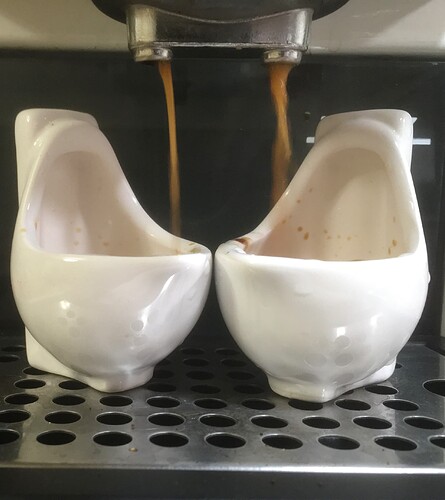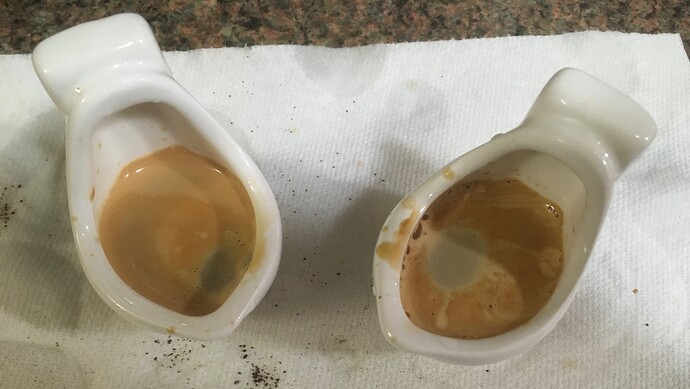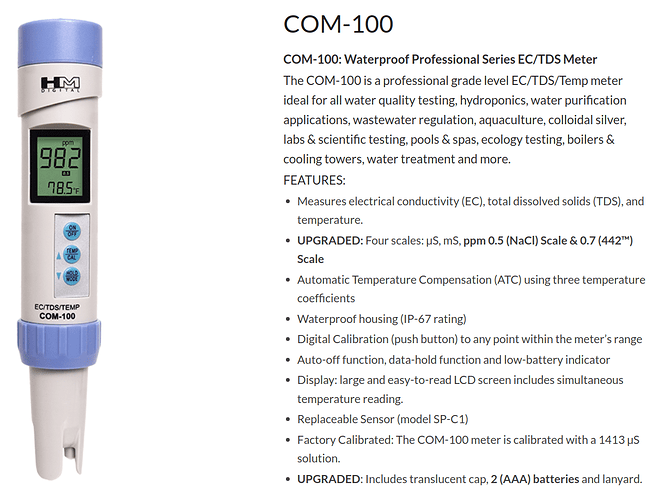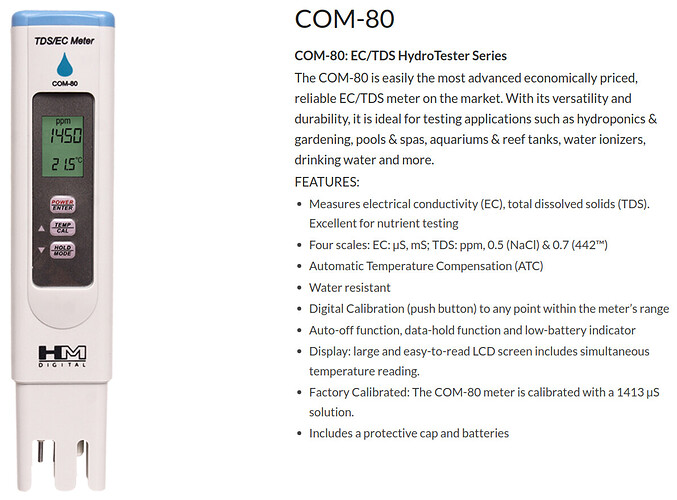Moccamaster $100 off for Prime day. I’m sharing both as an FYI, and to ask if it’s as good as it’s said to be.
Have one. Don’t use it. It has been a long time since I used a drip machine and I vaguely remember the moccamaster being better than others I have owned but it doesn’t come close to pour over or aeropress
These are probably the only machines I’d consider for auto. They are handmade in the Netherlands, have 5-year warranties, are proven over 50 years, fewer failure points than other machines, and have parts availability. Wirecutter, for instance, recommends the OXO or Bonavita over this. Those are Chinese imports with 1-year warranties, more failure points, and no parts. I scored an OXO for cheap ($80) several years ago and it started intermittently failing after about a year. It still works but will cut out mid-brew for absolutely no reason sometimes.
The question would be which model to get. For starters, I would absolutely not get a thermal carafe (T in the product name). They are a pain in the ass to clean and negatively impact the flavor imo.
Next, you should also strongly consider how much coffee you’ll be making. Will you always brew a full carafe? If not, then you should only be considering the KBGV (auto basket with half carafe switch) or KB (manual basket) models. Difference here is that KBGV can slow the flow from the boiler, whereas KB has a switch on the basket to control the size of the opening. Be aware that if you close the basket and forget while brewing, then it’s going to overflow.
That Colombian I brewed yesterday was so good that I was craving it last night. Right around dinner time it really hit me and I was having coffee flashbacks. Today I pushed the grind slightly coarser (9F to 9K) and backed the ratio down from 17:1 to 16.5:1 and…
It’s much worse. The magic I had yesterday with the sweetness kicking in to control the acidity is gone, and yet somehow the bitterness in the finish is even worse. So now it’s clearly underextracted, but how did the grassy finish increase? Million dollar question right there. Patrik is the only person I’ve seen even comment on this phenomenon.
Yeah he’s the only one that talks much about not all extraction being good extraction. I think you’ve made this point before and I tend to agree that most coffee personalities focus on extraction numbers because it’s one of the few objective measures and it sounds good at first glance.
Thanks a lot. I ended up going with the KGBV. Hopefully will give us some decent cups on the days when I don’t have time/motivation for manual brewing.
Colombian attempt #3
9A, 17:1, ~202 F water, low agitation multi-pour
Very modest adjustments to increase extraction. The Yahtzee brew I hit was slightly coarser at 9F but everything else the same. No magic this time. The first cup was perfect in acid / sweet balance, second was slightly too bright, and this one is slightly too dark. The characteristic is still there but the darker flavors overpower the acids. Too muddled, no clarity, magic balance lost. Tomorrow I get to try 9F again to see if we’re really working with a 25 micron window here, or if it’s just standard V60 slot machine effect. I’d put my money on slots but either way it’s annoying.
Colombian #4: 9F, 17:1, 202 F. Increasing the grind size ~25 microns wasn’t the secret trick and I’m pretty relieved by that. This is just another case of pulling the V60 slot machine. I may have agitated this brew a bit more. Dunno, impossible to measure that or what effect it may or may not have.
Do any of you keep track of beverage out? I’ve only measured it a few times so dunno what kind of variance to expect there. I wouldn’t suspect it would vary much for the same coffee but maybe I’m wrong.
like how much actually comes out of the bottom of the cone? Yes, I record that. It doesn’t vary too much from pour to pour if everything else is constant, and the variance is probably due to me either leaving the cone on the cup for a varying amount of time and a few extra drops coming out (I usually pull the V60 off as soon as the water drops below the top of the bed, obviously there’s still a bit of water in the bed at that point that will naturally drip out).
Yeah that’s what I mean. Was just wondering if there’s enough variation there to perceptively alter the result. It was always about the same the few times I have checked it so never really bothered. I also don’t recall too many coffee deep divers measuring both so probably assumed it didn’t matter.
Yeah the only reason I do it is because I was trying to get a feel for how much water is retained in the grinds and just never stopped writing it down (terminal spreadsheet braine)
Kids got me some novelty shot glasses for Father’s Day. Used them with the espresso machine recently.
I saw earlier that Nordstrom is doing a sale on a green Moccamaster KBGV. Similar price to the Prime Day deal in case anyone is interested and missed it ($259).
https://www.nordstrom.com/s/kbgv-select-coffee-brewer-nordstrom-exclusive/6265859
Thanks, I just ordered one. Seems like a good addition to my coffee bar since my girlfriend has no interest in playing around with the v60. For anyone who has used one, are there any specific filters or other accessories I should be ordering to go with it?
I ordered one too to mess around with and use for guests. The Moccamaster #4 filters are rebranded Filtropas, which many people seem to prefer in drip machines. The only other thing I can think of that you might want to pick up is whatever they recommend for descaling.
at the in-laws for a few days in new orleans, it’s hot as fuck and I’m so fucking dehydrated and bloated from eating mass quantities of poboys, in-laws drink fucking half-caff coffee with chickory and they are confused/offended that I get up early and go get coffee, idgaf.
anyway, a number of pretty good espressos so far uptown. So far I’ve hit these places:
http://www.cherrycoffeeroasters.com/ (very nice space, good wifi, a little bit off the beaten path)
https://undergrowthcoffee.com/ (tiny space but good vibe, next door to a 24 hour bar)
https://www.crcoffeenola.com/ (Bougie/trendy, but the espresso was decent)
ETA: new poboy champ in my book is this place that doesn’t have a website, just a facebook page Redirecting...
I finally got around to EC/TDS meters for measuring water hardness. It required some research because I was skeptical of the cheaper ones (<$20) that are common. For one thing, most of them don’t really report what we’re interested in, and here’s the cliffs on why:
When I talk with technicians and cafes about their TDS, the primary tool most folks are using is another type of meter: a salinity meter, which confusingly is also marketed as a TDS meter. These meters are calibrated to a different factor — namely NaCl, or sodium chloride, also known as table salt.
So if you think you are hitting your TDS standard using a NaCl meter reading 132 ppm, your actual TDS is 187 ppm and that’s why you are calling me about your machine scaling up.
Ok so it would be nice to have a meter that can read and calibrate to 442. That eliminates most of the cheap (<$20) units on the market. I’m going to name two that I think will do the job at two price points. I decided to purchase the more expensive option due to better build quality and AAA batteries.
That unit is the HM Digital COM-100. It has waterproof (IP67) housing, a replaceable sensor, and runs on 2 AAA batteries. HM Digital is an established brand (1987) in water testing equipment, not a fly-by-knight Amazon brand. I’ve already checked the authorized retailers, and the cheapest is $47.99 with free shipping, which I’ll link below.
If you’re interested in a cheaper option, the HM Digital COM-80 seems to function exactly the same for roughly half the price. Here’s what you lose in features/quality: this one is only splash proof (IP64/65), requires 3 1.5v cell batteries, and does not have a replaceable sensor. The authorized retailer I linked above has it for $27.00 with free shipping.
Keep in mind that these only serve one useful coffee purpose, and that’s to measure the hardness of your water. They don’t measure buffer/alkalinity. Another thing to know is that they may require calibration from time to time, although HM says these should hold calibration for a long time if maintained properly.
I dunno if most people need one of these or not. Personally, I’m doing a lot of blends with brew waters, so not already having one is kind of silly in my case. For instance, I don’t really know that my Evian dilution is actually the TDS I think it is, or that my baking soda / epsom concentrates are doing exactly the number I targeted. However, I’m glad I waited and didn’t impulse buy the cheap salinity meter.
Meter received. So far no surprises. Distilled reads 3.4 PPM, my Evian blend is 66 PPM, and tap water is 290 PPM using the 442 scale. Waiting for Brita filtered water to stabilize at room temperature. These units use temperature correction but the filtered was so cold that the reading wasn’t stable.
Update: Brita filtered tap read 230 PPM 442 / 166 PPM NaCl.
update on this
I “fixed” this by just tugging a little bit on the bottom of the cone after rinsing. this has made my pour timings more consistent (I was getting ~20 seconds of range before, since I started doing this they’re basically within 5 seconds now).





